Thai Beef Salad You’ll Love: The Most Delicious Meal
Thai Beef Salad is a culinary masterpiece known for its vibrant flavors, colorful presentation, and the unique way it blends savory beef with refreshing herbs and zesty dressing. At JustThaiRecipes, we live and breathe authentic Thai cooking, sharing recipes that have roots in Thai culture while being easy enough for home cooks to master.
Our story, as shared on the About page, begins with Lina a passionate Thai food lover who, together with her partner, built this platform to bring Thailand’s rich culinary heritage to kitchens worldwide. They believe food isn’t just about eating; it’s about creating memories and experiencing cultures. This passion shines through every recipe, including this ultimate Thai Beef Salad.
In this detailed guide, you’ll explore everything about Thai Beef Salad: its origins, essential ingredients, dressing techniques, and tips to craft the best version at home. You’ll also uncover variations, nutritional benefits, and comparisons to other Southeast Asian salads. Whether you’re making this dish for a family meal or entertaining guests, this article has you covered with step-by-step details and expert insights. Don’t miss our Thai Chicken Salad if you love healthy yet flavorful options.
Table of Contents
Table of Contents
Understanding Thai Beef Salad
What Makes Thai Beef Salad Unique?
Thai Beef Salad, locally known as Yum Nua, is not just another salad; it’s a harmonious combination of spicy, sour, sweet, and salty notes. This explosion of flavors comes from the perfect pairing of ingredients: tender slices of beef, aromatic herbs, and a bold dressing that ties everything together. Unlike Western salads that rely heavily on creamy dressings, Thai salads embrace freshness and balance, allowing each component to shine.
What sets it apart is its signature dressing made with lime juice, fish sauce, sugar, and Thai chilies. The heat from the chilies, combined with the tanginess of lime and the savory depth of fish sauce, creates a flavor profile that’s unmistakably Thai. Every bite is a burst of freshness, enhanced by crunchy vegetables and herbs like mint and cilantro.
Additionally, Thai Beef Salad stands out because it’s incredibly versatile. You can serve it as an appetizer, a light main course, or even as a side dish during gatherings. It fits perfectly into various dietary preferences, being naturally gluten-free and low in carbs when prepared authentically.
The Cultural Significance of Thai Beef Salad
Thai cuisine is deeply rooted in a philosophy of balance. Each dish strives to combine the four main flavor profiles harmoniously. Thai Beef Salad is a great example of this balance in action. It’s widely popular across Thailand, often served as part of a shared meal rather than as a single dish.
In traditional Thai culture, meals are communal, and salads like Yum Nua are designed to complement other dishes on the table, from spicy soups to fragrant rice dishes. Street food vendors and home cooks alike have their own versions, each adding personal touches to the recipe. This dish’s popularity has spread globally, making it a favorite in Thai restaurants around the world.
Moreover, the salad embodies the Thai philosophy of using fresh, locally sourced ingredients. From the herbs to the beef, each element is chosen for its ability to contribute to the overall harmony of the dish. For food enthusiasts, making Thai Beef Salad at home is not only a culinary adventure but also a way to connect with Thai traditions.
Check out our Thai Glass Noodle Salad to discover another salad that perfectly balances flavor and texture.
Thai Beef Salad Ingredients Explained
Essential Components for Authenticity
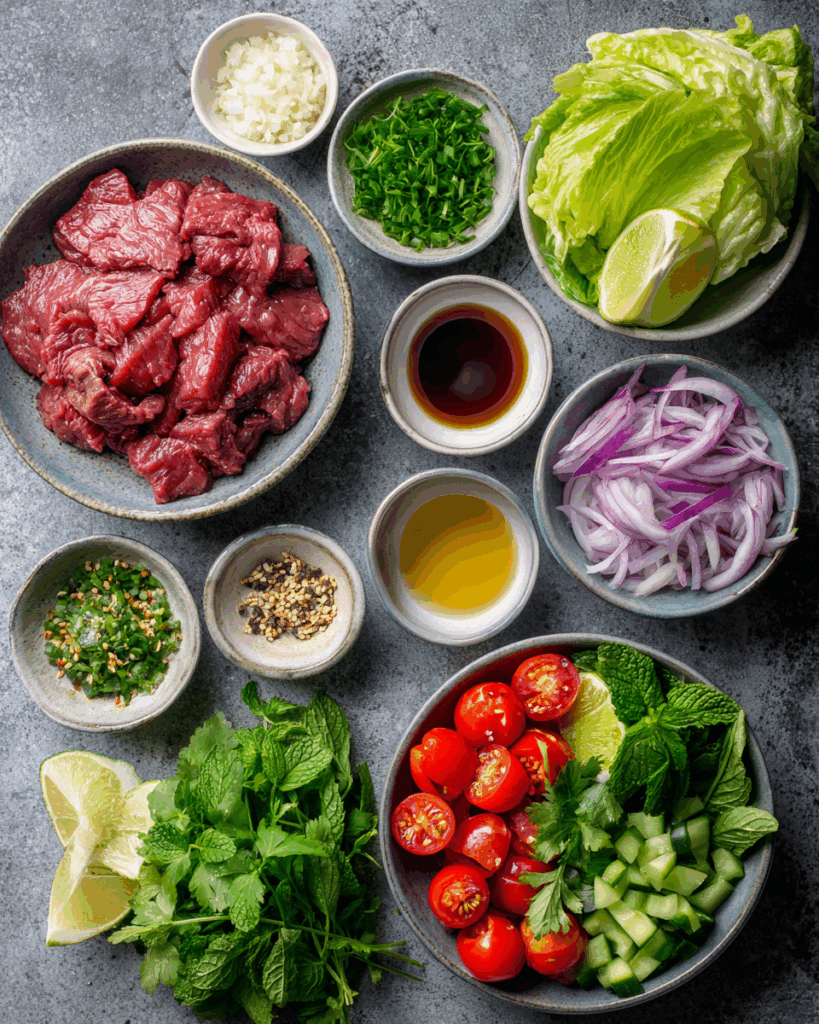
The secret to a truly authentic Thai Beef Salad recipe lies in selecting fresh, high-quality ingredients. Every component contributes to the unique flavor profile:
- Beef – The star of the dish is tender beef steak, typically sirloin or flank. These cuts deliver a balance of juiciness and flavor.
- Herbs – Fresh cilantro and mint are crucial for their aromatic freshness. They’re what give this salad its distinctive Thai character.
- Vegetables – Mixed lettuce leaves form the base, while cherry tomatoes, red onion, and cucumber add crunch and color.
- Dressing – The heart of the salad, combining lime juice, fish sauce, sugar, minced chili, garlic, and cilantro stems. This dressing packs sweet, sour, salty, and spicy all in one.
- Garnish – Roasted unsalted peanuts add a delightful crunch and nutty flavor.
Using these ingredients as listed ensures you’re capturing the authentic Yum Nua experience. Many Western adaptations may add ingredients like bell peppers or omit fish sauce, but these changes alter the traditional taste.
Substitutions and Tips for the Perfect Taste
While authenticity is ideal, sometimes substitutions are necessary. Here’s how to keep the flavors intact:
- Beef Alternatives – If sirloin isn’t available, use ribeye for a richer taste or skirt steak for a more budget-friendly option.
- Fish Sauce Substitute – Use light soy sauce or tamari if you’re avoiding fish sauce, though the umami depth will differ.
- Chilies – Bird’s eye chilies are traditional, but you can use jalapeños for a milder spice or serrano for a similar heat level.
- Sugar – White sugar balances the dressing, but you can swap it with palm sugar for a more authentic Thai sweetness.
- Oil – Grapeseed, canola, or vegetable oil work equally well. Avoid oils with strong flavors that overpower the dressing.
Pro Tip: Always prepare the dressing fresh. The lime juice and herbs lose their brightness if made too far in advance.
For another salad that relies heavily on fresh herbs and zesty dressing, don’t miss our Thai Cucumber Salad.
Crafting the Perfect Thai Beef Salad Dressing
Traditional Dressing Recipe
The dressing is the heart of any authentic Thai Beef Salad recipe, bringing together the bold, harmonious flavors Thai cuisine is famous for. A proper Thai dressing balances sweet, sour, salty, and spicy elements to enhance not overpower the natural taste of the beef and vegetables. Here’s what goes into a classic dressing:
- Bird’s Eye Chili – Adds a fiery kick, a staple in Thai flavor profiles.
- Garlic – Provides a sharp, aromatic depth.
- Cilantro Stems – Often overlooked, but they release intense flavor when finely minced.
- Fish Sauce – The savory backbone of the dressing, delivering umami.
- Lime Juice – Freshly squeezed for tangy brightness.
- Sugar – Typically white sugar or palm sugar, balancing the acidity and heat.
- Neutral Oil – Grapeseed or vegetable oil smooths out the dressing.
Preparation Tip: Traditionally, chilies, garlic, and cilantro stems are pounded in a mortar and pestle until they form a paste. This technique releases the oils and aromas that define Thai cuisine. The remaining ingredients are then added and whisked or shaken together.
For an alternative method, you can finely mince the garlic, chili, and cilantro, then combine all ingredients in a jar and shake vigorously.
You can see similar dressing techniques explained with step-by-step visuals on RecipeTin Eats and Beyond Kimchee.
Adjusting the Dressing to Your Preference
The beauty of Thai cooking lies in its adaptability. The traditional ratio of sweet-sour-salty-spicy can be tweaked based on your taste preferences:
- For more tang – Increase lime juice slightly.
- For a sweeter balance – Add a pinch more sugar.
- For more depth – Use extra fish sauce or a dash of soy sauce.
- For intense heat – Keep the chili seeds or add an extra chili.
If you prefer variations, try exploring recipes like the Nam Tok Neua version on Hot Thai Kitchen, where toasted rice powder adds a nutty element to the dressing.
Inspiration from Other Authentic Sources
Many chefs have their signature takes on this dressing. For example, Every Last Bite suggests using honey instead of sugar for a more natural sweetness, while VJ Cooks balances spice with a slightly milder chili option for those who prefer less heat. These variations prove that while the basics remain the same, you can make the dressing uniquely yours without losing authenticity.
Don’t miss our Cashew Chicken Thai Style for another recipe where a perfectly balanced sauce makes all the difference.
Cooking and Preparing the Beef
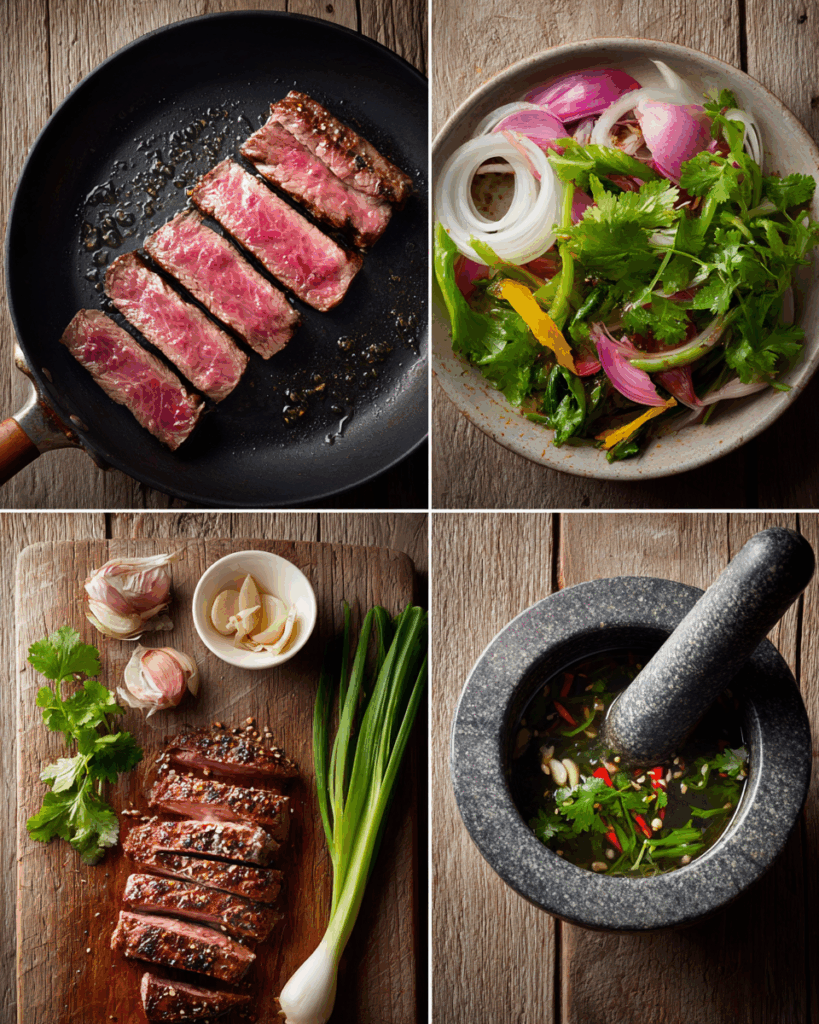
Choosing the Right Cut of Beef
The foundation of an outstanding Thai Beef Salad lies in the quality of the beef you use. Sirloin steak is a classic choice because it’s tender, flavorful, and easy to slice thinly. Other excellent cuts include flank steak or tenderloin, both of which hold up beautifully to quick, high-heat cooking methods. When selecting beef, choose cuts with good marbling, as this enhances flavor and juiciness.
For the best results, always let the beef sit at room temperature for about 20–30 minutes before cooking. This ensures even cooking and a better sear. Trim any excess fat but leave a thin layer if you prefer richer taste.
Techniques to Achieve Perfect Doneness
Cooking the beef properly is critical to the success of Thai Beef Salad. The goal is to achieve a charred exterior with a juicy, tender interior. Here’s how to do it:
- Preheat the Pan or Grill – The pan should be very hot, almost smoking, to create a perfect sear.
- Season Lightly – Rub the beef with a small amount of oil, salt, and pepper just before cooking.
- Sear on High Heat – Cook for about 2 minutes per side for medium-rare (internal temp around 52°C/125°F) or 2 ½ minutes per side for medium (around 57°C/135°F). Avoid overcooking, as it will make the beef tough.
- Rest the Meat – After cooking, loosely tent the beef with foil and let it rest for 10 minutes. This step allows the juices to redistribute, keeping the meat moist.
- Slice Against the Grain – When slicing, cut the beef thinly against the grain to ensure each piece is tender and easy to chew.
Optional Marinade for Added Flavor
While the traditional recipe relies on the dressing for flavor, you can take it up a notch by marinating the beef. A simple marinade of lime juice, garlic, fish sauce, and a touch of oil enhances tenderness and infuses aromatic Thai flavors into the meat. Marinate for at least 30 minutes but not more than 2 hours to avoid breaking down the fibers too much.
Additional Tips for Success
- Do not overcrowd the pan when searing, as this lowers the temperature and causes the meat to steam rather than sear.
- Pat the beef dry before cooking to achieve a better crust.
- If using a grill, lightly oil the grates to prevent sticking.
- For a smoky flavor, consider adding a touch of char by finishing the steak on an open flame.

With the beef perfectly cooked, you’re ready to combine it with the fresh vegetables and vibrant dressing that make Thai Beef Salad irresistible.
Assembling the Salad
Layering for the Best Presentation
Assembling Thai Beef Salad is as much about visual appeal as it is about flavor. The vibrant colors of herbs, vegetables, and perfectly seared beef make this dish inviting even before the first bite. To achieve a restaurant-quality presentation, follow these steps:
- Base Layer – Begin by placing a bed of mixed lettuce leaves on your serving plate or bowl. Drizzle lightly with a bit of dressing and toss gently to coat the leaves. This prevents them from tasting dry under the toppings.
- Add Vegetables – Scatter halved cherry tomatoes, thinly sliced red onion, and cucumber slices over the lettuce. These vegetables provide crunch and freshness, balancing the richness of the beef.
- Arrange the Beef – Slice the rested beef thinly against the grain, then layer it neatly on top of the vegetables. Distribute it evenly so every serving gets a good amount.
- Incorporate Herbs – Sprinkle fresh cilantro leaves and mint generously over the beef. These herbs are essential for delivering the aromatic character of Thai cuisine.
- Final Dressing Drizzle – Spoon or drizzle most of the remaining dressing over the salad, reserving a little for the finishing touch.
Garnishing to Elevate the Dish
The garnish is the final step that takes this salad from simple to stunning. Add a handful of finely chopped roasted peanuts for a crunchy texture and nutty flavor that contrasts beautifully with the tender beef. Extra mint or cilantro leaves scattered on top add brightness and aroma.
You can also drizzle the last bit of dressing around the edge of the plate to enhance presentation. For those who like it extra spicy, sprinkle a few slices of fresh chili on top.
Tips for Assembling Like a Pro
- Dress Right Before Serving – To keep the vegetables crisp, add the dressing only when ready to eat.
- Balance Is Key – Ensure every bite has a mix of beef, herbs, and vegetables.
- Serve Immediately – Thai Beef Salad tastes best when served fresh, as the herbs retain their aroma and the beef stays juicy.
With the salad beautifully assembled, you’ve created a dish that’s not only flavorful but also visually stunning. This part is where all your efforts come together into a vibrant, delicious plate.
Variations of Thai Beef Salad
Thai Beef Noodle Salad Twist
One exciting variation of Thai Beef Salad is the Thai Beef Noodle Salad, where tender rice noodles are added to make the dish more filling. The noodles soak up the tangy and spicy dressing, enhancing every bite. To prepare this version, cook thin rice noodles until just tender, rinse under cold water, and toss them with the dressing before layering with beef and vegetables. The addition of noodles not only adds texture but also makes the salad a perfect standalone meal. This twist is popular among those who love hearty yet refreshing dishes.
Authentic Thai Beef Salad Recipe with Regional Flavors
While the classic recipe remains the favorite, there are regional spins that add unique elements to authentic Thai Beef Salad. For example, in northeastern Thailand, toasted rice powder is often sprinkled on top, giving it a nutty aroma. Some versions use lemongrass or kaffir lime leaves for a citrusy lift. Others may marinate the beef in a mixture of fish sauce, lime, and garlic before grilling, creating an intense depth of flavor. Each regional touch keeps the essence of Thai Beef Salad intact while offering a new taste experience.
Best Thai Beef Salad for Different Preferences
If you’re aiming for the best Thai Beef Salad, you can tailor it to your liking. Want more heat? Add extra chilies to the dressing. Prefer a sweeter profile? Increase the sugar slightly or use palm sugar for a caramel-like sweetness. For those watching calories, use lean cuts of beef and avoid heavy oils. The beauty of this dish is how easily it adapts while remaining true to Thai culinary traditions.
Exploring Different Marinades
A Thai Beef Salad marinade can transform the flavor of the meat. Marinating the beef in lime juice, garlic, and fish sauce for at least 30 minutes adds tang and tenderizes the meat. Some cooks add soy sauce, ginger, or even a touch of sesame oil for a fusion twist. These marinades create layers of taste that make the salad unforgettable.
Thai Beef Salad Ingredients for Creative Variations
Experimenting with the Thai Beef Salad ingredients opens endless possibilities. Try adding slices of avocado for creaminess, mango for a tropical sweet note, or roasted sesame seeds for extra crunch. While these aren’t traditional, they pair beautifully with the dressing and herbs. Remember, the dressing remains the backbone of the dish, so keep its balance intact no matter what variations you try.
Thai Beef Salad Name and Its Cultural Connection
Known as Yum Nua in Thailand, the name itself tells a story: “Yum” means to mix, and “Nua” means beef. This highlights the simple yet flavorful nature of the dish. Regardless of its variations, the cultural roots of Yum Nua stay strong, making it a staple at Thai gatherings and a favorite for home cooks worldwide.
Thai Beef Salad Calories and Nutritional Benefits
For those mindful of nutrition, Thai Beef Salad calories are generally lower than many Western salads because it doesn’t rely on heavy creams or oils. With lean beef, fresh vegetables, and a light dressing, this dish provides protein, vitamins, and healthy fats while staying relatively low in carbs. It’s an excellent option for weight management and healthy eating without sacrificing flavor.
This part showcases how Thai Beef Salad can be customized without losing its authentic essence. Whether you opt for the noodle version, regional flavors, or creative toppings, the dish remains a refreshing, protein-rich favorite that’s hard to resist.
Comparing Thai and Vietnamese Beef Salads
Key Differences in Flavors and Preparation
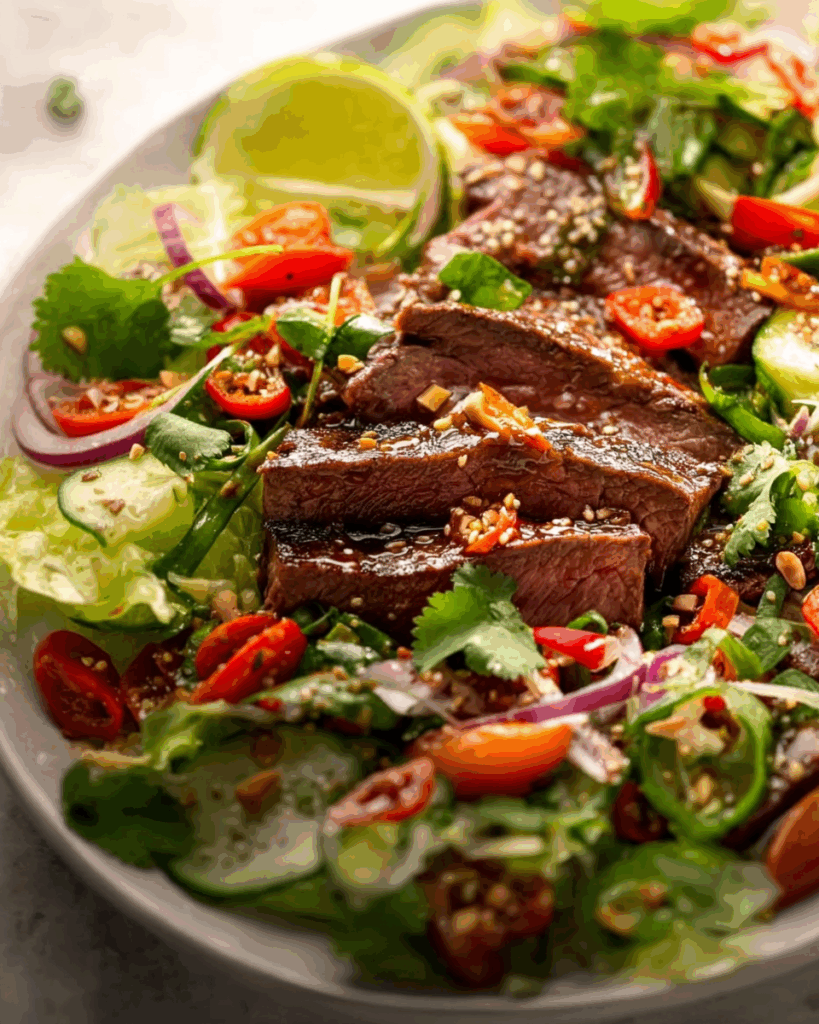
Although both Thai and Vietnamese cuisines celebrate fresh herbs, bold dressings, and vibrant salads, Thai Beef Salad and Vietnamese Beef Salad have distinct characteristics. The primary difference lies in the flavor balance:
- Thai Beef Salad (Yum Nua) emphasizes bold, fiery spice from bird’s eye chilies, tangy lime juice, and savory fish sauce. The dressing packs an intense punch, creating a lively explosion of flavors.
- Vietnamese Beef Salad (often called Bò Tái Chanh) tends to be more delicate and herb-forward, with lighter use of spice and a more balanced sweet-sour profile. Rice vinegar is commonly used in place of lime, and fresh basil often plays a starring role.
In terms of preparation, Thai versions usually feature seared beef sliced thin, while Vietnamese versions sometimes use very thin slices that are lightly “cooked” in lime juice, similar to a ceviche-style approach.
Choosing Between the Two for Your Palate
Choosing between Thai Beef Salad and its Vietnamese counterpart comes down to personal preference.
- If you enjoy bold, spicy, and tangy flavors, Thai Beef Salad is the winner. The chili-lime-fish sauce combo delivers a punch that excites the palate.
- If you prefer a milder, fresher taste with more subtle aromatics, Vietnamese Beef Salad might be more to your liking. It offers a refreshing experience with gentle citrus notes and lighter seasoning.
For those who love to explore Southeast Asian flavors, try making both at home to appreciate their differences. The contrast between the intense spice of Thai cuisine and the refined freshness of Vietnamese cooking highlights the unique culinary identities of each culture.
Fusion Ideas Inspired by Both
Some creative cooks combine elements of both salads, using Thai-style dressing with Vietnamese herbs or adding Thai mint to a Vietnamese salad. These crossovers can create an exciting fusion dish that pays homage to both traditions. When experimenting, ensure the dressing remains balanced and the herbs stay fresh to maintain authenticity.
With these comparisons in mind, you can appreciate why Thai Beef Salad remains a global favorite its assertive flavors make it a standout in any meal lineup.
Nutritional Insights and Health Benefits
Thai Beef Salad Calories Breakdown
One of the reasons Thai Beef Salad is loved worldwide is its nutritional profile. This dish is naturally balanced, offering a great combination of lean protein, vitamins, and healthy fats. On average, a serving of Thai Beef Salad (about 1 ½ cups) contains approximately:
- Calories: 300–350 kcal
- Protein: 25–30g
- Fat: 15–18g (mainly from beef and peanuts)
- Carbohydrates: 8–12g (mostly from vegetables and dressing sugar)
- Fiber: 3–4g
Unlike many Western salads, which may rely on creamy dressings high in calories, Thai Beef Salad keeps things light with its lime-based dressing. The use of herbs, fresh vegetables, and lean beef makes it a healthy choice for those aiming to maintain or lose weight.
Why Thai Beef Salad Is a Healthy Choice
Several factors contribute to the health benefits of Thai Beef Salad:
- Rich in Protein – Lean beef supports muscle growth and repair, keeping you full for longer.
- Packed with Vitamins – Vegetables and herbs like mint, cilantro, and lettuce provide vitamin C, K, and antioxidants that boost immunity and overall health.
- Healthy Fats – Nuts like roasted peanuts add heart-healthy fats that enhance satiety.
- Low in Carbs – With minimal carbohydrate content, this salad fits well into low-carb, keto, and paleo diets.
- Metabolism Boosting – The chili in the dressing not only adds heat but also helps stimulate metabolism.
Additional Tips for a Healthier Version
- Use grass-fed beef for more omega-3 fatty acids.
- Reduce sugar in the dressing or substitute with honey or stevia.
- Skip peanuts if you’re avoiding added fats or allergens.
- Add extra cucumbers or lettuce to increase fiber and lower calorie density.
Health Comparison with Other Salads
When compared to other salads, such as Caesar or Cobb, Thai Beef Salad stands out as a lighter, more nutrient-dense option. It doesn’t rely on heavy mayonnaise or cheese-based dressings, making it a clean yet satisfying choice.
Eating Thai Beef Salad regularly can fit into a healthy diet, especially when paired with other nutrient-rich dishes. The blend of protein, herbs, and spices not only nourishes the body but also excites the taste buds, proving that healthy food doesn’t have to be boring.
Expert Tips for Making the Best Thai Beef Salad
Common Mistakes to Avoid

Even though Thai Beef Salad is relatively simple to prepare, certain mistakes can compromise its authentic taste and texture. Avoiding these pitfalls will ensure your salad turns out flavorful and well-balanced every time:
- Overcooking the Beef – The steak should remain juicy. Overcooked beef becomes tough and loses its flavor. Stick to medium-rare or medium.
- Skipping Fresh Herbs – Mint and cilantro are essential. Using dried herbs or skipping them altogether dulls the freshness of the dish.
- Overdressing the Salad – Too much dressing can make the vegetables soggy and overpower the beef. Start with a small amount and add more as needed.
- Not Resting the Meat – Slicing the steak too soon causes juices to escape, leading to dry meat. Always rest it for at least 10 minutes.
- Using Bottled Lime Juice – Fresh lime juice is non-negotiable for achieving that bright, tangy flavor.
Enhancing Flavor with Marinades
While the dressing alone is enough to flavor the beef, marinating can take Thai Beef Salad to another level. Use a simple marinade of lime juice, fish sauce, minced garlic, and a touch of sugar. Let the beef soak in this mixture for 30 minutes to 2 hours. This not only infuses the meat with Thai flavors but also tenderizes it. For deeper complexity, you can add:
- Ginger – For a warm, zesty undertone.
- Soy Sauce – For a touch of umami.
- Sesame Oil – To give a subtle nutty aroma, especially for fusion versions.
Professional Tips for Perfect Balance
- Taste and Adjust – The dressing should be balanced. Always taste and tweak the sugar, lime, and fish sauce ratio to suit your palate.
- Slice Thinly Against the Grain – This makes the beef tender and easy to eat.
- Serve Fresh – This salad doesn’t hold well; prepare and serve it right away for the best experience.
- Play with Textures – Adding roasted peanuts or toasted rice powder enhances crunch and depth.
- Experiment with Add-Ons – Mango, avocado, or even grilled vegetables can complement the dish while keeping its Thai spirit.
Creating Restaurant-Quality Thai Beef Salad at Home
To make the best Thai Beef Salad at home, focus on freshness and balance. Use high-quality beef, crisp vegetables, and prepare the dressing just before serving. Pay attention to details—how the beef is cooked, how thinly it’s sliced, and how the herbs are arranged. Small touches like sprinkling roasted peanuts at the last moment or drizzling extra dressing around the plate can elevate your dish visually and flavor-wise.
Mastering these techniques and tips ensures that every bite of your Thai Beef Salad will be as vibrant and delicious as the ones served at your favorite Thai restaurant.
Conclusion
Thai Beef Salad is more than just a salad—it’s a celebration of Thai culinary tradition. With its perfect balance of spicy, sour, sweet, and salty notes, it offers a refreshing yet deeply satisfying experience. By using fresh herbs, quality beef, and a well-balanced dressing, you can recreate this restaurant favorite right in your kitchen.
This recipe is versatile, healthy, and adaptable, making it a staple for anyone who loves vibrant Asian flavors. Whether you stick to the traditional version or explore variations like Thai Beef Noodle Salad, every bite delivers a taste of Thailand’s bold cuisine.
Looking for inspiration? Try our other authentic dishes like Thai Glass Noodle Salad or Cashew Chicken Thai Style to expand your Thai cooking skills.
FAQs about Thai Beef Salad
What is the difference between Thai and Vietnamese beef salad?
The main difference lies in the flavor profile and preparation. Thai Beef Salad has a stronger, spicier taste with more chili, lime, and fish sauce, while Vietnamese beef salad uses lighter flavors, often with rice vinegar and basil, and sometimes the beef is “cooked” with lime juice rather than grilled.
What is a traditional Thai salad called?
A traditional Thai salad is called “Yum”, which means “to mix.” The term refers to a variety of salads, including the famous Yum Nua (Thai Beef Salad), where fresh herbs, vegetables, and proteins are combined with a sweet-sour-spicy dressing.
What are the four types of Thai salad?
Thai cuisine features four main salad types:
Yum – Mixed salads like Thai Beef Salad, where ingredients are tossed with a zesty dressing.
Som Tum – Spicy green papaya salad, popular as street food.
Larb – Minced meat salad, often made with chicken or pork, seasoned with lime, fish sauce, and herbs.
Phla – Spicy seafood salads, typically made with lightly cooked seafood and aromatic herbs.
What do you put in Thai beef salad?
An authentic Thai Beef Salad includes thinly sliced grilled beef, mixed lettuce leaves, cherry tomatoes, cucumber, red onion, fresh cilantro, mint, roasted peanuts, and a tangy Thai dressing made with lime juice, fish sauce, sugar, chili, garlic, and herbs. These ingredients create a vibrant mix of flavors and textures that define the dish.
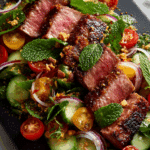
Thai Beef Salad
- Prep Time: 15 minutes
- Cook Time: 5 minutes
- Total Time: 20 minutes
- Yield: 2 servings 1x
- Category: Salad
- Method: Pan-seared
- Cuisine: Thai
Description
A vibrant Thai beef salad featuring tender slices of seared steak, fresh herbs, crisp vegetables, and a zesty chili-lime dressing, topped with roasted peanuts for crunch.
Ingredients
- 1/2 tsp birds eye or Thai chili, deseeded and finely minced
- 1/4 tsp finely minced garlic (1/2 small clove)
- 1 tbsp finely chopped cilantro/coriander stems
- 2 1/4 tsp white sugar
- 2 tbsp fish sauce
- 3 tbsp lime juice
- 1 tbsp grapeseed oil (or canola or vegetable oil)
- 1 small pinch cooking/kosher salt
- 7–8 oz (200–250 g) good quality beef steak (sirloin), at room temperature
- 1 tbsp oil (vegetable, peanut, or canola oil)
- 1/4 tsp each salt and pepper
- 2 heaped cups mixed lettuce leaves
- 10 cherry tomatoes, halved
- 1/4 small red onion, very finely sliced
- 1/2 cucumber (optional deseeded), sliced (about 1/3 cup)
- 1/4 cup cilantro/coriander leaves, lightly packed
- 1/4 cup mint leaves, lightly packed
- 1/4 cup finely chopped peanuts, roasted and unsalted
- Extra cilantro/coriander and mint leaves for garnish
Instructions
- Prepare the Dressing: Using a mortar and pestle, grind chili, garlic, cilantro stems, and a pinch of salt into a smooth paste. Add sugar, fish sauce, lime juice, and oil; mix well. Adjust seasoning to taste. Alternatively, mince ingredients and shake in a jar with remaining dressing ingredients.
- Cook the Beef: Preheat a skillet over high heat until very hot. Drizzle beef with 1/2 tbsp oil, season with salt and pepper, and cook to desired doneness (2 min per side for medium rare or 2.5 min per side for medium). Remove from skillet, tent with foil, and rest for 10 minutes.
- Assemble the Salad: Toss lettuce with 1 tbsp of the dressing. Slice beef thinly against the grain. In a bowl, combine beef, cherry tomatoes, red onion, cucumber, cilantro, and mint with most of the remaining dressing. Toss gently.
- Serve: Arrange dressed lettuce on plates, top with beef mixture, sprinkle with peanuts, garnish with extra herbs, drizzle with any remaining dressing, and serve immediately.
Notes
- Adjust the chili amount based on your preferred spice level.
- Resting the beef is essential to keep it juicy and flavorful.
- For extra crunch, lightly toast the peanuts before chopping.
- Serve immediately to enjoy the salad’s fresh textures.
Nutrition
- Serving Size: 1 bowl
- Calories: 320
- Sugar: 7g
- Sodium: 1100mg
- Fat: 18g
- Saturated Fat: 4g
- Unsaturated Fat: 12g
- Trans Fat: 0g
- Carbohydrates: 10g
- Fiber: 2g
- Protein: 28g
- Cholesterol: 70mg
Keywords: Thai beef salad, spicy Thai salad, chili lime beef, Thai cuisine

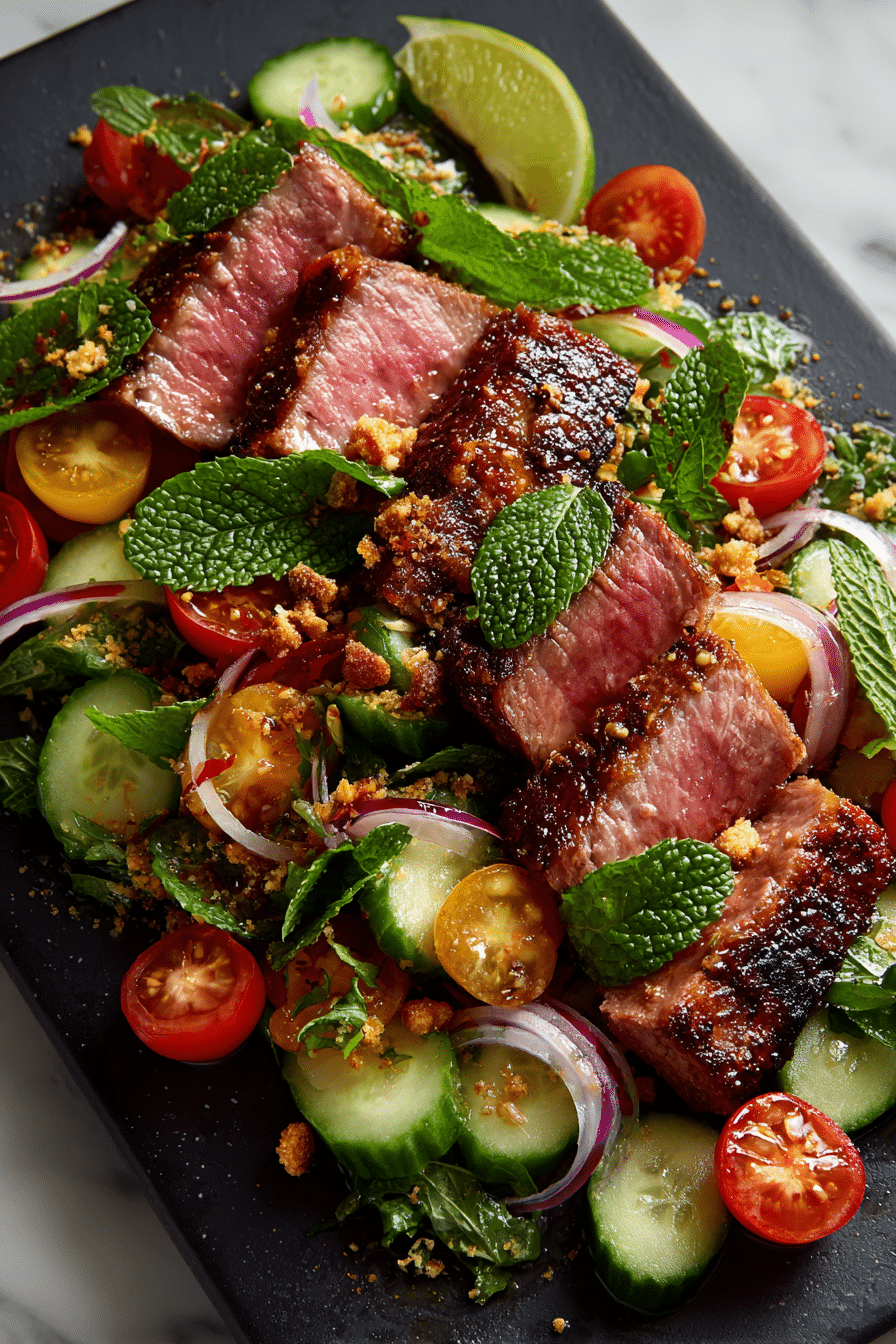
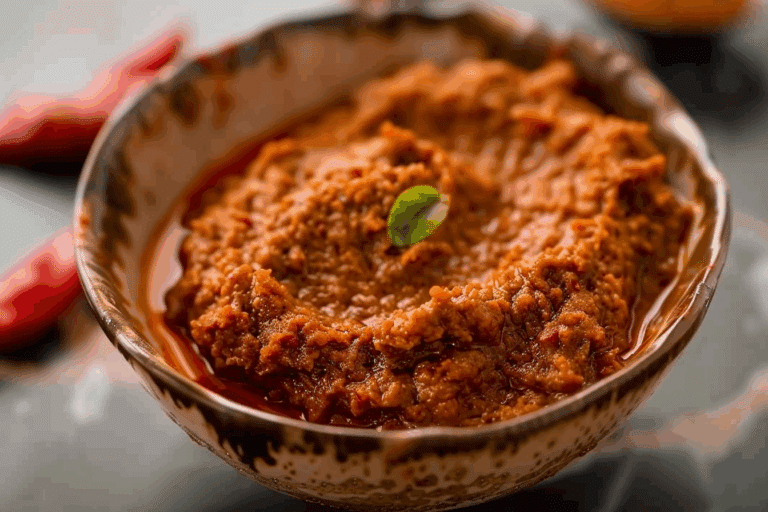
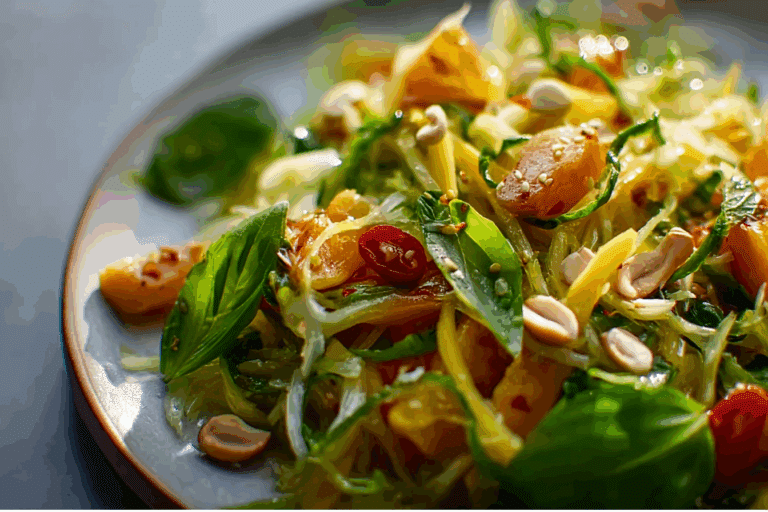

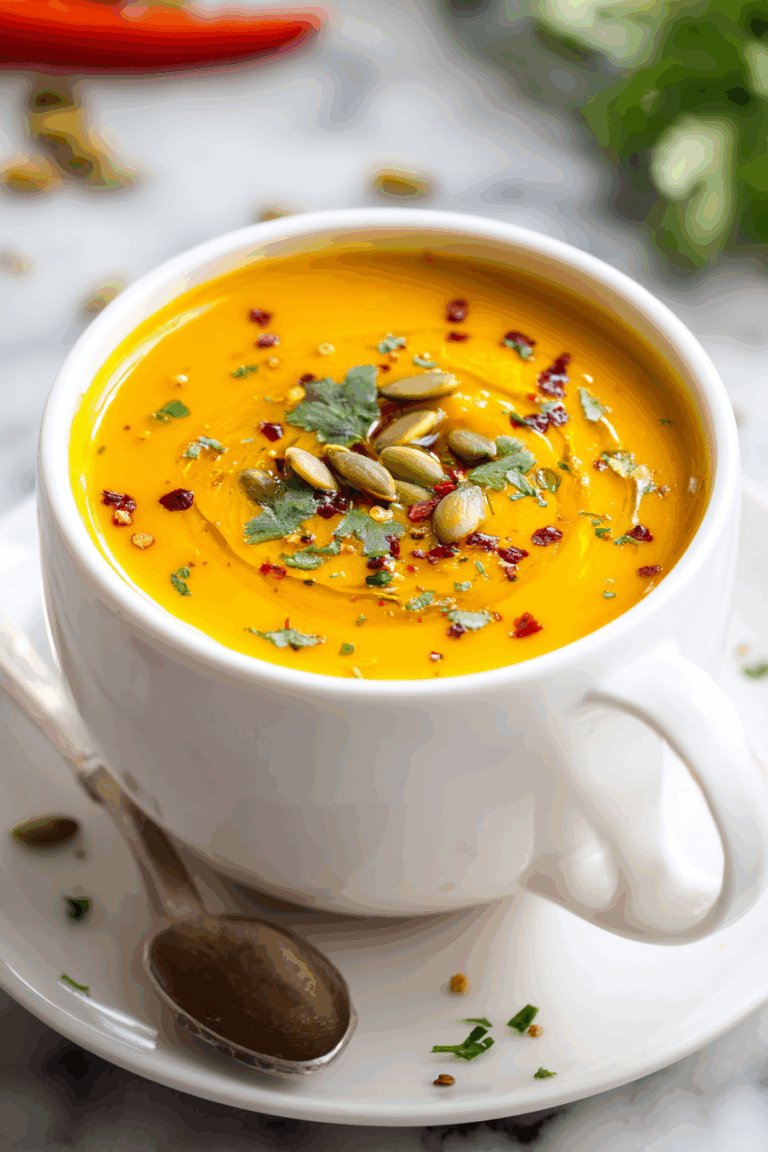

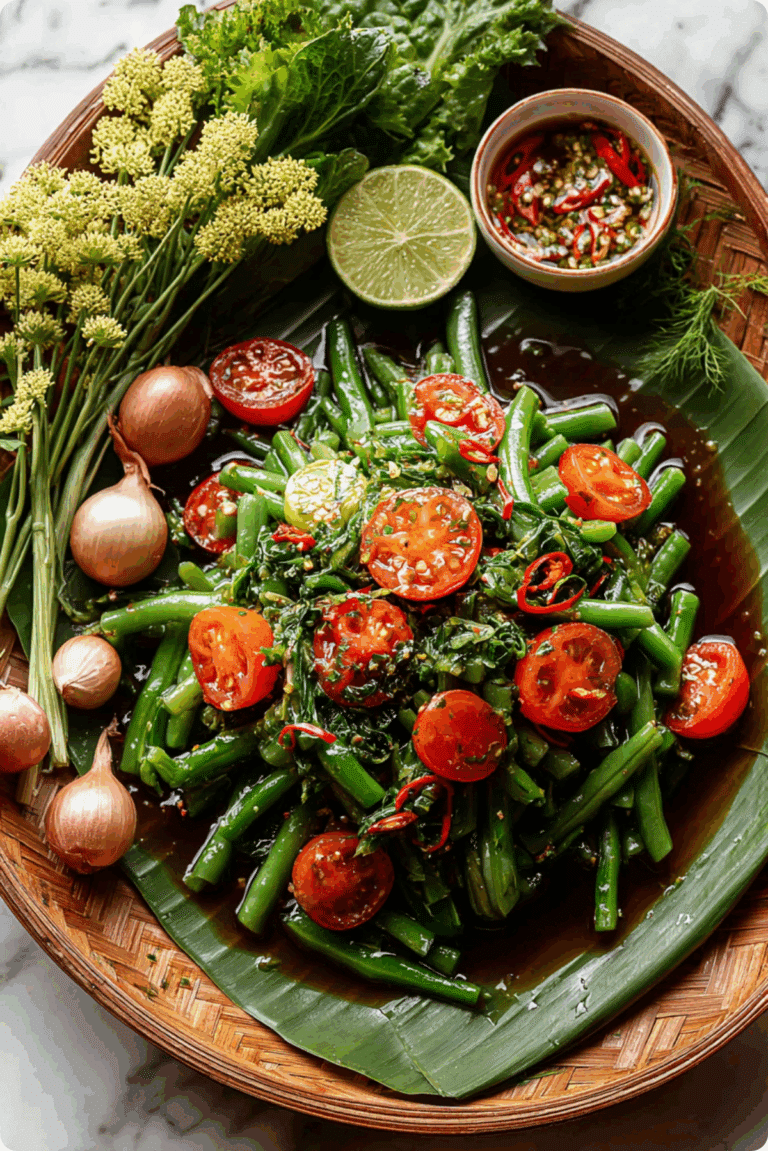
Some genuinely fantastic work on behalf of the owner of this web site, dead outstanding content.